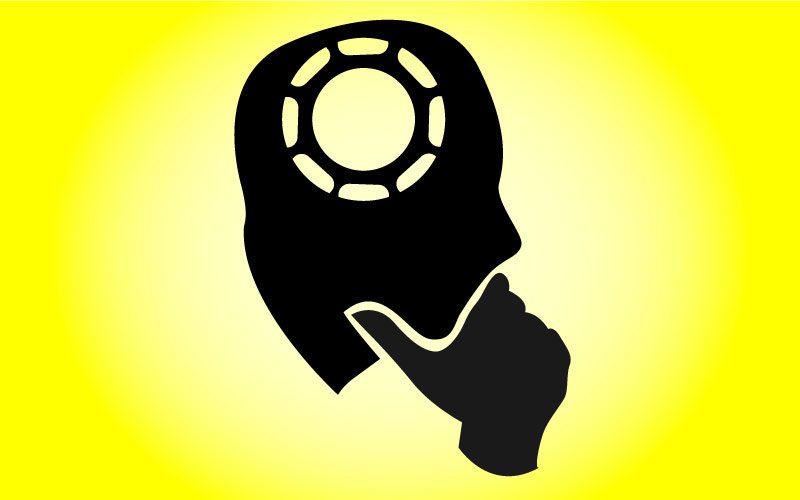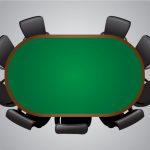In any poker game, we have a strategy, and our opponents have their own strategies. How these strategies match up determines who makes money and how much money is made. So far, this series has been looking at concepts and ideas that have the point of developing one particular skill: making our strategies score better against our opponents. We’ve discussed a number of basic ideas over the past couple of months, and now we’re going to review those ideas and see how each of them fits into the overall puzzle of making more money in poker.
Big Idea #1: Matched Bets
We want to have strong ranges when we put in bets that are matched (ie: we bet and our opponent doesn’t fold). This obviously explains how profitable value betting works, but the idea goes far beyond that. This big idea also tells us exactly where we should put our strong hands to make the most money from them. Deciding where to put our strong hands in our overall strategy is one of the most important decisions we can make, and following this big idea is what guides our play with them.
Big Idea #2: Unmatched Bets
We want to have weak ranges when we bet and our opponent folds. Again, there is an obvious aspect of this since it explains how profitable bluffing works. However, it also tells us that we shouldn’t waste our strong hands on situations where our opponent isn’t going to put in much money. The first and second big ideas go together in that they guide how our strategy should break down in the context of our opponent’s folding tendencies.
Big Idea #3: Changing the Strength of Our Ranges
To facilitate big ideas #1 and #2, we have to be able to change the strength of our ranges at times. To make a range stronger, we can remove weak hands or add strong hands. Along similar lines, to make a range weaker, we can remove strong hands and add weak hands. Changing the strength of different ranges is the single action that makes our strategy perform better against our opponents, but it has to be done in the context of the first two big ideas above.
This is at the heart of exploitative play, but it’s also at the heart of simply improving our results at poker. If we benefit in a situation by having a weak range, then we improve our profits when we make that range weak. The same thing goes for strong ranges. Auto-pilot play is one of the biggest things that gets in the way of changing our ranges like we need to, and that’s something we’re going to address in just a moment.
Big Idea #4: Using Reads to Make Adjustments
We pay attention to how our opponents play in very specific ways so that we can adjust and improve our strategies against them. The key idea of exploitative play is taking a reasonable strategy, like your default against unknowns, and changing it so that it takes advantage of the specific things we know about our opponents.
The types of reads that we get are important, and incredibly-detailed descriptions of how someone played a specific hand will often be next to useless for these purposes. However, knowing that an opponent folds a high percentage of the time in a specific situation (ie: to 3-bets, to c-bets, to flop check/raises) can make us a lot of money very quickly. Basic reads that are actionable are worth a lot more than specific, “advanced” reads that aren’t particularly useful.
Moving Ahead: Killing Auto-Pilot
If you were playing several tables with no reads and no HUD, you would have a basic way of playing against the field. This is your default mode of behavior, and it’s necessary to be able to play in a reasonable way under these circumstances if you have to. This is the strategy that we’re going to call our default, and every time we do something differently than our default, we’re going to call that an adjustment. Using the four big ideas above, we can make adjustments that are simple and extremely effective using the following basic process:
1. Identify a read or piece of information that can be used against our opponent.
2. Decide which one of our ranges needs to have its strength changed in light of this read.
3. Move hands into or out of these ranges appropriately.
The main problem that will prevent people from putting this process into practice is going on auto-pilot and resorting to some form of default play. Since the appropriate reads are ignored and/or the adjustments are not made, the effectiveness of your strategies suffer. If you want to make your strategies more robust (ie: make more from your opponents), then you’re going to hae to learn how to follow this process.
Practical Tips for Avoiding Auto-Pilot
A lot of people are trying to get in as many hands as possible, and this often means playing a lot of tables. While a high quantity of poker is being played, the quality of your poker is suffering. It would be much better for you to cut down on the tables a bit and be very active about looking for the types of basic reads that you could actually use.
Actively looking for reads is the first step. If you start doing that, the rest will start to come on its own because you’ll naturally pick up on what you need to do. Here’s your homework: Make a thread that has some reads you’ve picked up on players and how you would plan to use them in hands. Post how you are manipulating your default strategy to better exploit your opponents.
Submit your review | |










